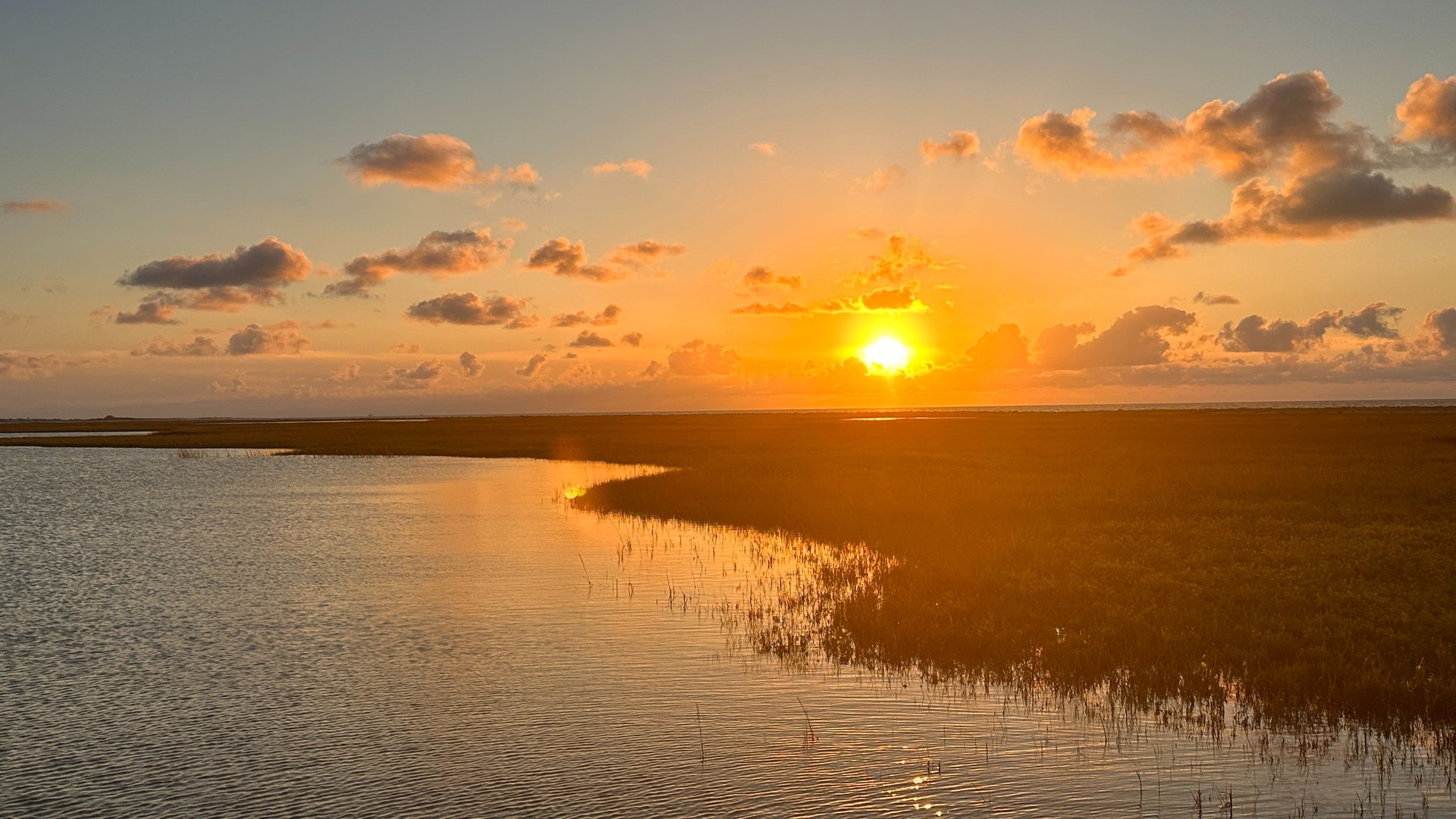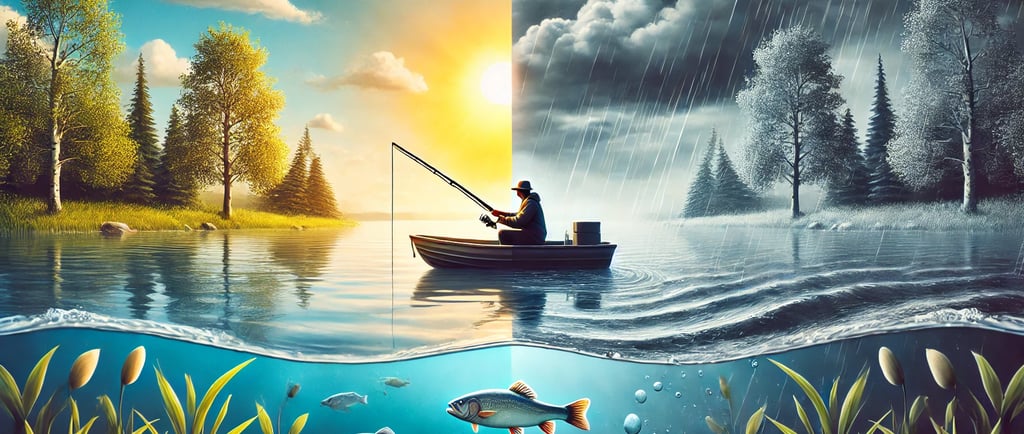
The Effects of Barometric Pressure on Fishing: What Every Angler Should Know
This article delves into how barometric pressure influences fish behavior and offers strategies for anglers to adapt their techniques accordingly. It explains that fish are sensitive to pressure changes, which affect their swim bladders and, consequently, their feeding and movement patterns. The blog categorizes barometric pressure into high pressure (clear skies), low pressure (cloudy, stormy weather), stable pressure (consistent weather), and rapid pressure changes (before or after a front), providing technical details and tips for both beginners and seasoned anglers for each scenario. Understanding these effects can help anglers predict fish behavior and improve their fishing success.



As any seasoned angler will tell you, fishing success often depends on more than just skill, patience, or the quality of your gear. Mother Nature plays a pivotal role, and one of her most subtle but significant influencers is barometric pressure. Understanding how changes in barometric pressure affect fish behavior can turn a decent fishing trip into an unforgettable one.
What Is Barometric Pressure?
Barometric pressure, or atmospheric pressure, is the weight of the atmosphere pressing down on the Earth’s surface. It fluctuates with changing weather conditions, rising during clear, calm weather and dropping as storms or rain move in.
For fish, these changes are more than a minor atmospheric shift; they directly impact their swim bladders and behavior. Fish are highly sensitive to pressure changes, and this sensitivity is a key factor in their feeding and movement patterns.
Barometric Pressure Categories:
High Pressure (Clear Skies)
High-pressure systems are typically associated with sunny, bluebird skies and calm conditions. Fish activity often slows during these times because high pressure can make fish less comfortable, forcing them to seek deeper, cooler waters where the pressure is more stable. When fishing in high pressure:Technical Details: High pressure compresses fish’s swim bladders, making them less likely to move and feed aggressively. This is why they often retreat to deeper water.
Tips for Beginners: Use weighted baits or bottom rigs to reach deeper depths. Opt for natural-looking baits like worms or minnows to entice fish that are more cautious.
Tips for Seasoned Anglers: Experiment with finesse techniques such as drop-shot rigs, shaky heads, or smaller lures. Pay attention to electronics to locate fish holding close to structures like ledges or submerged brush piles.
Low Pressure (Cloudy, Stormy Weather)
When barometric pressure drops, fish often become more active and feed aggressively. This is because a falling barometer usually signals an approaching storm or front, triggering a feeding frenzy as fish prepare for potentially harsher conditions. This is prime time for anglers to take advantage:Technical Details: The drop in pressure expands a fish’s swim bladder, making them more comfortable and active. This is why they move into shallower waters to feed.
Tips for Beginners: Use lures with more action, such as crankbaits, spinnerbaits, or soft plastics with exaggerated movements.
Tips for Seasoned Anglers: Focus on reaction baits and power-fishing techniques. Cover water quickly to find schools of actively feeding fish. Shallow flats, grass lines, and points can be especially productive during these conditions.
Stable Pressure (Consistent Weather)
Stable barometric pressure often coincides with predictable fishing conditions. Fish will generally stick to their routine, making this an excellent time to fish based on the time of day, season, and local feeding patterns.Technical Details: In stable pressure, fish often adopt normal behaviors, and their location and activity depend more on water temperature and food availability than atmospheric pressure.
Tips for Beginners: Focus on proven tactics for the species you’re targeting. Stick to tried-and-true baits and fish in areas where you’ve had previous success.
Tips for Seasoned Anglers: Use this time to refine your presentations and try new techniques, as fish behavior will be more predictable. This is also a good opportunity to target less-pressured waters or experiment with different lure colors and profiles.
Rapid Pressure Changes (Before or After a Front)
The periods immediately before a low-pressure system arrives or after a high-pressure system settles in are often the most productive. Fish sense the coming change and feed aggressively before the pressure drops. Afterward, there might be a short lull as they adjust to the new conditions.Technical Details: Fish’s sensory systems are highly attuned to the rapid changes in pressure, prompting them to seek opportunities to feed before the environmental shift disrupts their routine.
Tips for Beginners: Be ready to capitalize on these windows by having your gear prepared and watching the weather closely. Focus on fast-moving baits that imitate fleeing prey.
Tips for Seasoned Anglers: During these windows, fish transition zones like the edges of drop-offs, creek channels, and underwater humps. Use versatile lures that can be adjusted for different depths, such as suspending jerkbaits or swimbaits.
Advanced Tips for All Anglers
Invest in Technology: Use a fishing app or weather app to monitor barometric pressure in real time. Combine this data with your fish finder or sonar to locate fish more effectively.
Understand Local Patterns: Learn how fish species in your local waters respond to pressure changes. For example, bass in shallow lakes may behave differently than trout in deep reservoirs.
Adapt to Seasonal Variations: During summer, fish may respond more dramatically to pressure changes because of higher water temperatures. In winter, they may be less active regardless of pressure.
Experiment with Speed: During low pressure, faster retrieval speeds often work better, while during high pressure, slow and steady presentations are key.
Conclusion: Read the Pressure, Reel in the Catch
Fishing success often lies in the details, and barometric pressure is a detail worth understanding. By learning to predict fish behavior based on atmospheric changes, you can maximize your time on the water and make your next fishing trip more productive.
Whether you’re a beginner just getting started or a seasoned angler looking to refine your skills, understanding barometric pressure can make a big difference. So, the next time you’re planning a trip, check the weather forecast, pack your gear, and let the barometer guide your strategy. It could mean the difference between a slow day on the water and a successful haul.
Tight lines and beautiful sunsets!

Craftsmanship
Every rod is proudly crafted in Houston, TX with a blend of domestic and imported components.
Contact Us
Copyright © 2025 Sunset Outdoors


